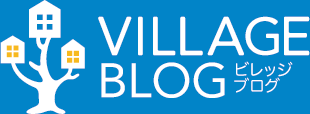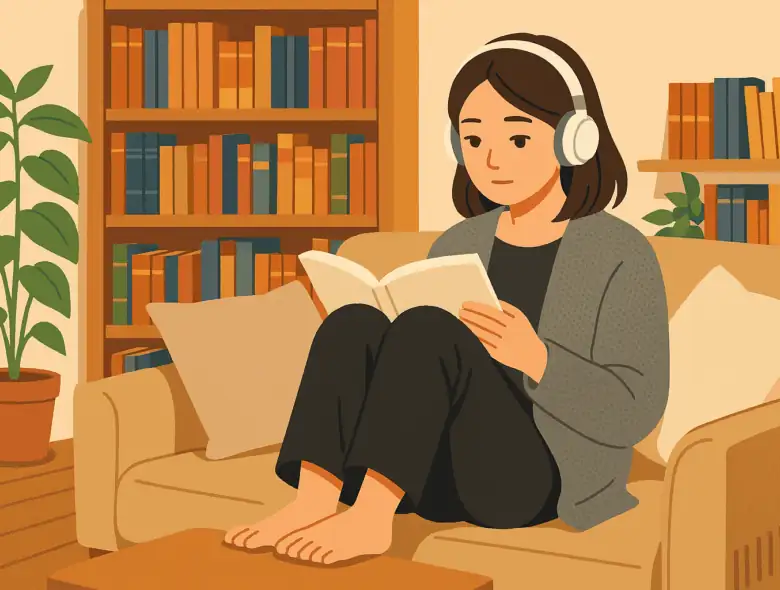With summer’s heat finally behind us and cooler temperatures settling in, autumn presents itself as the ideal season for curling up with a good book. If you’re living in a studio or one-bedroom apartment, you’ve probably wondered how to carve out a proper reading space without much room to work with.
This guide will show you practical ways to establish a reading corner and design a space where you can truly focus, regardless of your apartment’s size constraints.
Village House offers more than 1,000 reasonably priced and appealing rental properties across Japan. If you’re looking for a new place to live, check out our website.
Discovering your ideal reading corner

The secret to enjoying those peaceful moments with your favorite book lies in selecting the right location. Several factors should guide your decision when establishing this special corner:
- Seek out quiet, undisturbed areas
Concentration thrives away from household traffic. Consider spaces like hallway alcoves or living room corners that don’t see constant activity. These often-overlooked spots allow you to escape into your book without interruption from external noise or family movement.
- Harness window-side natural light
Daylight remains unmatched for comfortable reading. Windows provide excellent illumination during daytime hours, reducing dependence on artificial lighting while being gentler on your eyes. This soft, natural brightness makes extended reading sessions far less taxing.
- Design a sense of privacy
Enhanced focus often requires visual boundaries. Strategically placing tall bookshelves or substantial plants creates an enclosed feeling, transforming even small areas into intimate, study-like retreats.
Optimal seating arrangements for reading

Chair selection significantly impacts reading comfort. Models featuring armrests that accommodate both arms help relax your shoulders and reduce upper body tension. Back support covering your entire spine proves equally important. Regarding seat cushioning, extremes should be avoided as overly soft surfaces lack stability, while excessive firmness causes discomfort. The sweet spot lies in moderate, supportive padding.
Floor seating enthusiasts can achieve remarkable comfort through strategic cushion combinations. Various specialized options address different support needs:
- Arm support cushions (armrest-style)
Those experiencing shoulder and arm fatigue during reading sessions will appreciate armrest designs. Supporting your arms at the proper angle relieves strain while promoting better posture maintenance.
- Lumbar support cushions (backrest-style)
Back and spine discomfort calls for backrest-style cushions that work effectively against sofas or beds. These provide postural reinforcement and minimize lower back stress. Extended reading becomes considerably more pleasant when proper support prevents slouching, particularly benefiting individuals prone to back issues.
- Body pillows (hugging pillow type)
Readers who prefer reclining positions should consider body pillow options. These encompass your entire form, enabling stable, comfortable positioning even while lying down.
Achieving proper reading illumination

Research indicates that reading comfort peaks between 300-750 lux brightness levels. Excessive lighting results in problems with glare, while insufficient illumination leads to eye strain—both scenarios cause unnecessary fatigue. Striking the correct balance becomes essential for sustained reading pleasure.
Clear text visibility benefits from white fluorescent lighting. However, bedtime readers or those preferring relaxed atmospheres should choose warm, orange-tinted illumination instead.
Daytime window positioning captures abundant natural light effectively. Evening hours or overcast conditions call for supplementary desk or floor lamps to maintain comfortable visibility. Ceiling-mounted downlights combined with wall-based indirect lighting add depth while creating a sophisticated ambiance.
Reference: Panasonic Residential Lighting Systems
Implementing space-efficient book storage

Book lovers facing storage limitations should prioritize compact, efficient shelving solutions. Wall-hugging slim designs or desk-adjacent compact racks deliver substantial storage capacity despite space restrictions.
Contemporary markets offer increasingly attractive bookshelf designs that integrate seamlessly as decorative interior elements rather than disrupting room aesthetics. Mobile versions with wheels or adjustable modular systems provide flexibility for future rearrangements or relocations.
For more info, check out our blog: Creative Storage Solutions for Small Spaces
Establishing focused reading zones through area separation

1. Furniture-based separation
Sofa backs and open shelving units function excellently as informal room dividers, creating visual separation that promotes tranquility. Bookshelf placement achieves dual purposes—storage and spatial division—while maximizing space utilization.
2. Area rug boundary creation
A simple area rug instantly establishes natural room boundaries without requiring furniture rearrangement. The rug’s edges define your reading territory effectively.
Soft-textured rugs accommodate sitting or reclining comfortably, supporting prolonged focus on your reading material. Color and pattern choices can dramatically alter the room atmosphere and establish personalized, calming reading environments.
3. Temporary barriers with curtains or screens
Curtains and folding screens offer installation flexibility—deploy them only when concentration demands it. These minimize visual distractions, facilitating the focused environment that serious reading requires.
Partitions remain straightforward, making them practical choices for space-limited situations. They simulate private study atmospheres, helping readers mentally transition into deeper engagement with their books.
4. Natural plant-based division
Houseplants enable gentle area separation while preserving soft room aesthetics. Taller varieties provide screening benefits without the imposing presence of solid furniture or rigid partitions.
Plant greenery delivers documented relaxation benefits, fostering calm atmospheres that support reading concentration. Air-purifying and humidity-regulating plant varieties add practical environmental improvements to aesthetic appeal.
At Village House, deposits, key money, processing fees, and renewal fees are not required (※). If you’re looking to save on initial costs, don’t hesitate to contact us for more information.
※Please note that a deposit may be required depending on the specific terms of the contract and the results of the screening process.
Related articles:

Hello, I’m Machiko Doi, a freelance writer who writes about housing and living in Japan.
I live in an 80-year-old house that I inherited from my grandparents along with my two shelter cats and daughter.
We live a relaxed life while repairing the house.
I like to cook vegetables from the garden and fresh fish caught by my father, and enjoy them with cold beer on a hot day or hot sake on a cold day.



